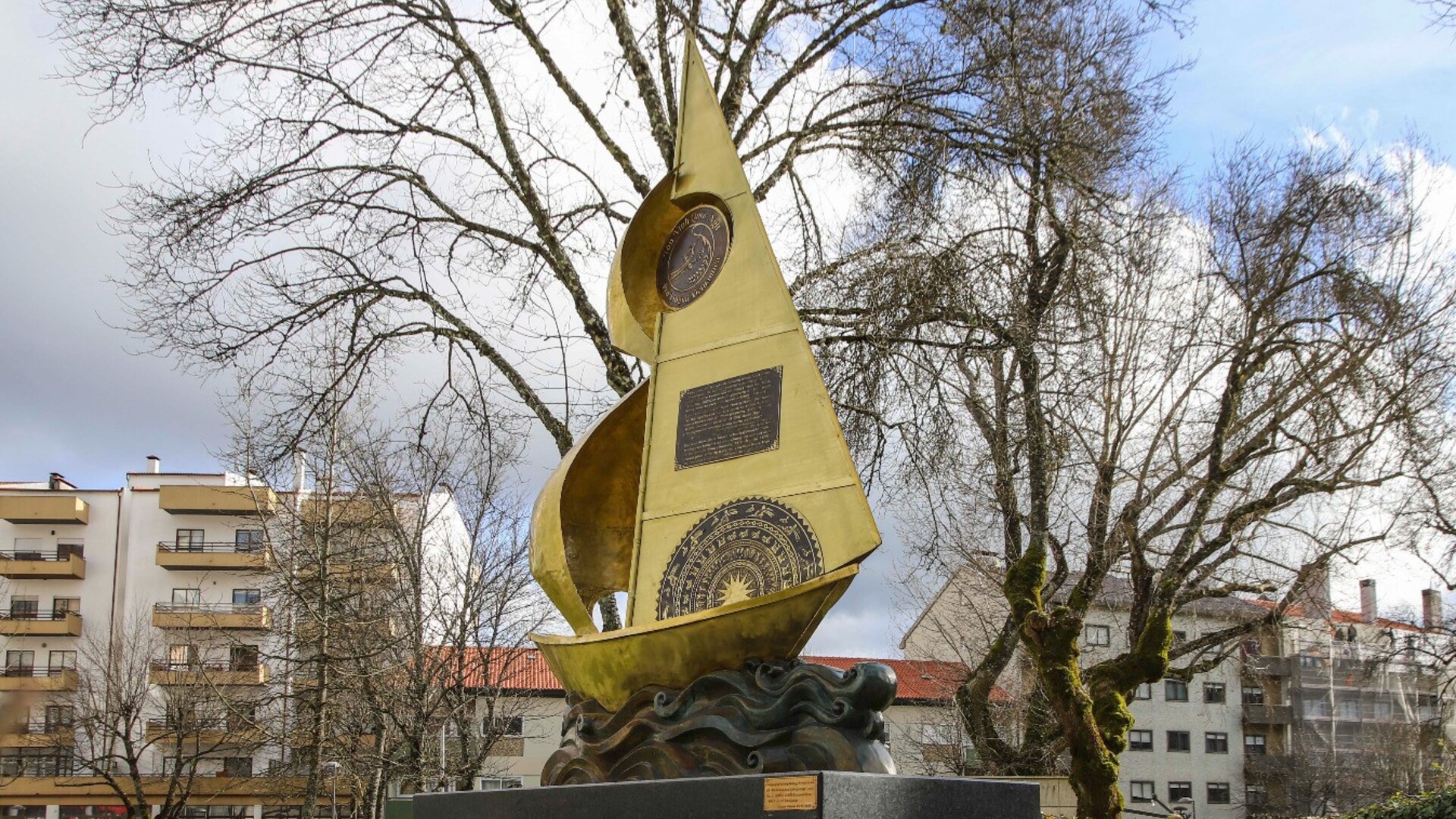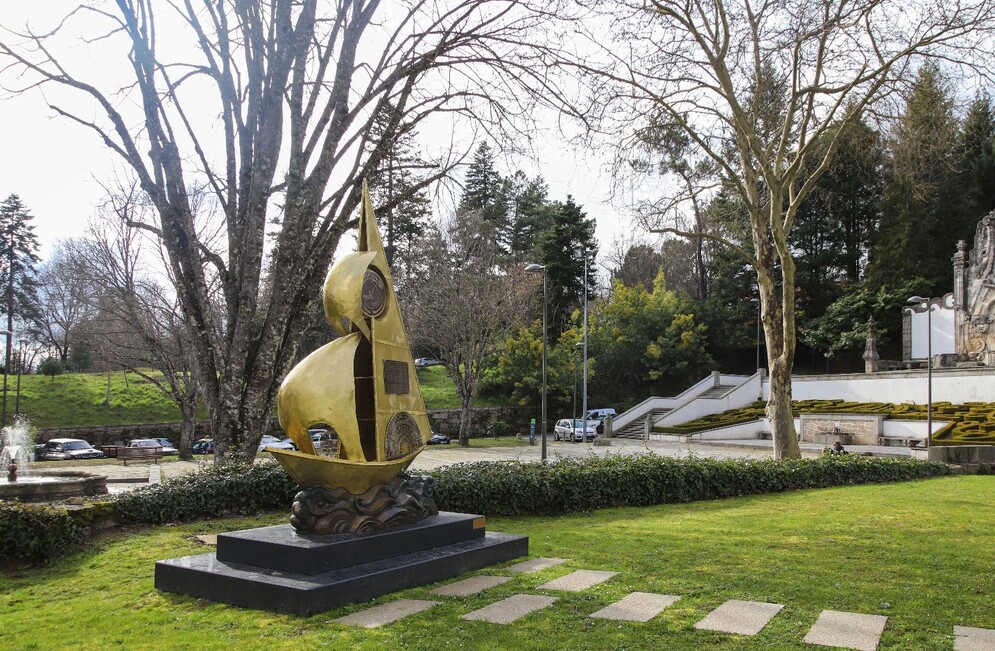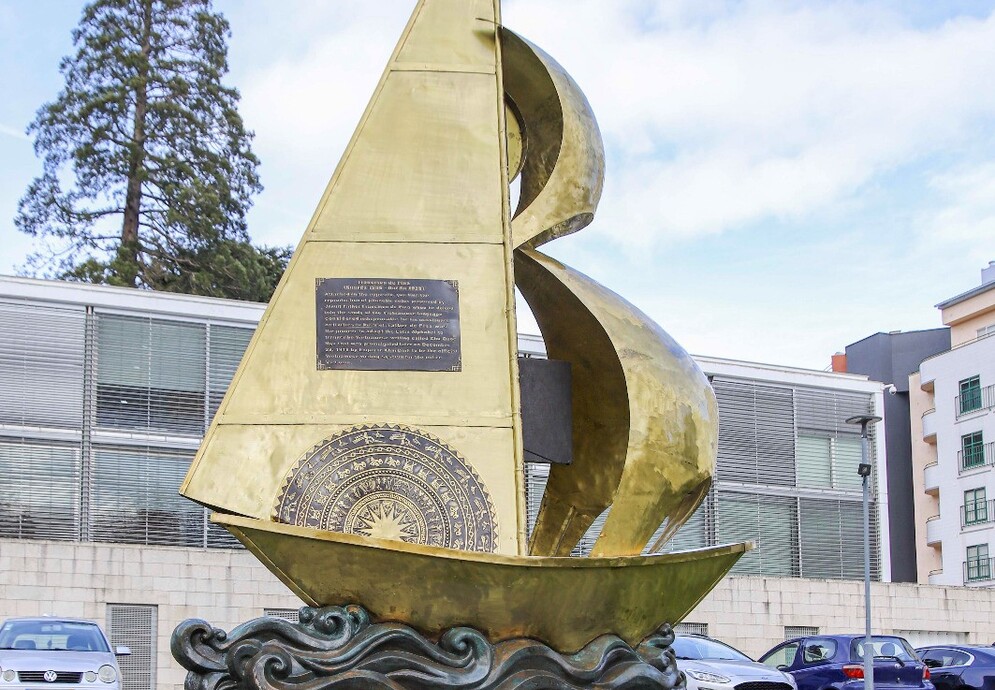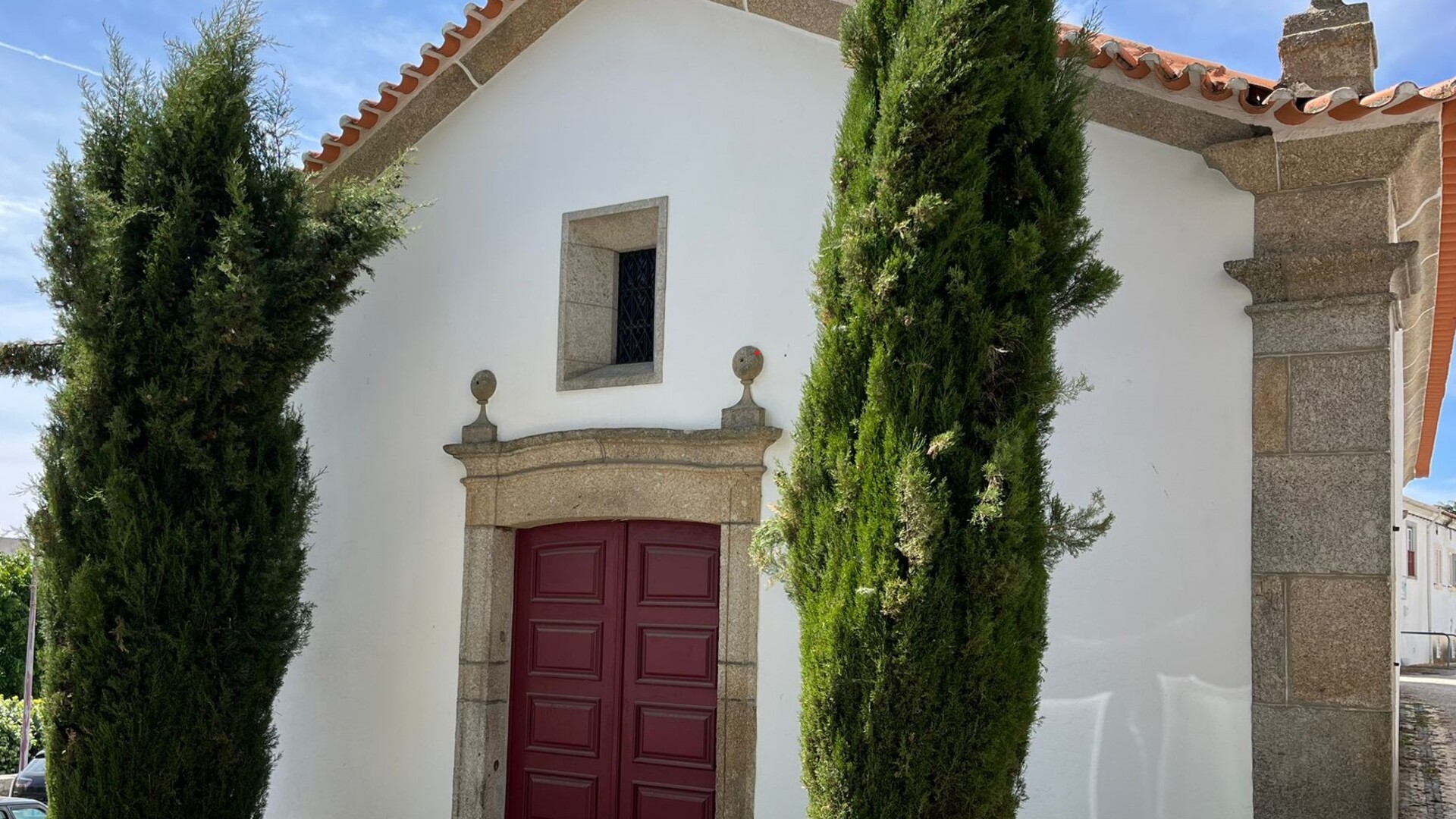The Estela sculpture outside BMEL is a posthumous tribute to Father Francisco de Pina, a Jesuit priest born in Guarda in 1586 whose religious journey included a mission to Vietnam, where he spent nine years of intense missionary, linguistic and intercultural activity.



About
Phone
271 205 530
Website
GPS coordinates
40.534336,-7.271714
A bronze monument, a sailboat three metres high under the waves of the sea, conceived, designed and built in Vietnam as a sign of recognition for that Jesuit priest who, still a young student of twenty-one, left his hometown more than four hundred years ago never to return. A missionary and linguist in Cochinchina at the time, he has now returned on the shoulders of Vietnamese in celebration, just as they carried him to his grave in tears when he died there in a shipwreck almost four centuries ago. It was on 15 December 1625. And the fruit of his labour remained there, in that Cochinchina of yesteryear, for others to continue and develop. To continue in the foundations of a Vietnamese Church and in linguistics, as history has shown.And the recognition is written there, on that symbolic monument, in three languages - Portuguese, English and Vietnamese - just like the famous trilingual Dictionarium Annamiticum, Lusitanum et Latinum, published in Rome in 1651 and which has its roots in the pioneering work of the Jesuit from Guarda. The monument reads: ‘This stele, brought from Quang Nam, Vietnam, is a symbol of our gratitude to Father Francisco de Pina (Guarda, 1586 - Hoi An, Vietnam, 1625), the pioneering inventor of “Chû Quôc Ngû” (Vietnamese writing in the Latin alphabet).’
Visit Facebook
